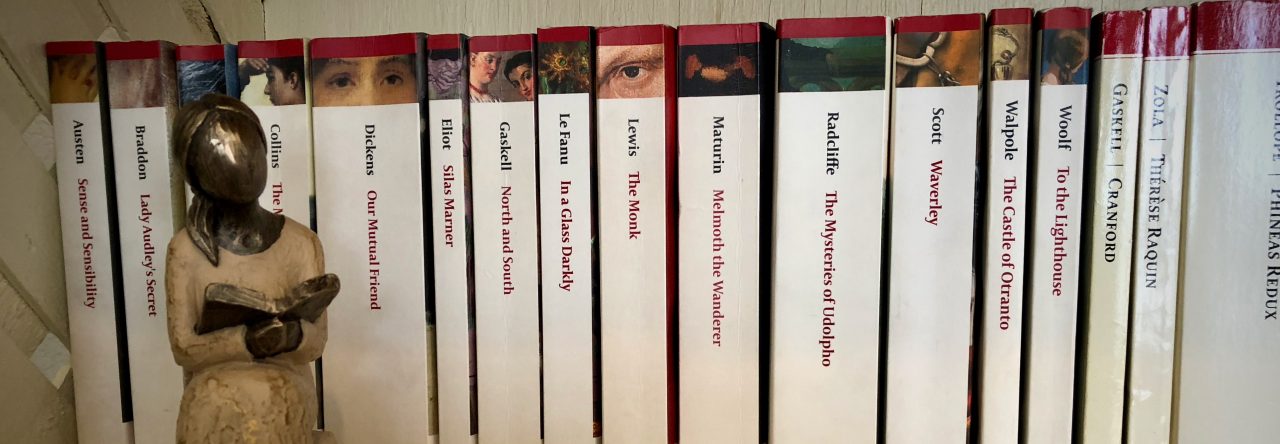Confused? See my last post for Explanations.
I tried to begin my exam reading in earnest back in May, and it was such a slog. I felt like each page read was hard-won, and the one day that I did read all I planned to I ended up with a tension headache from eye strain. So I took a break.
Looking towards the beginning of the semester (the time I told myself I would begin my reading, and high time, too), I was worried I would have the same struggle. But friends, I did not!
It helped that I began with a book I was looking forward to reading: Abigail Williams’ The Book In Society, a scholarly book about the social aspects of reading in the 18th century. The topic was fascinating, and Williams was engaging, and thus I conquered the first book in list three. According to Williams, reading was a highly social activity; throughout the century there was an elocution fad, and lots of books and opinions on how to read aloud “correctly.” People read together, often pausing for discussion, to while away the hours during the evenings or bad weather. Lower classes would take turns reading (if there was more than one person literate), as they sat around and worked at carpentry or whatever. There was even a market for book-related merchandise–statues of beloved characters, tea sets and fans with quotes from favorite books. Williams did a great job of evoking the eclectic, sociable world of books in this time, with examples from an impressive swath of diarists and letter-writers, male and female.
I also finished Tom Jones, which I had begun in January. It is long–my edition clocks in at almost 900 pages — but it shouldn’t have taken me that long to read. I’ve been poking away at this book for a couple of weeks, but never reading more than thirty or so pages every couple of days. That was enough, however, for me to start to suspect that about 200 pages from the end I’d get hooked, and find my pace pick up, and that is exactly what happened. Despite my mostly slow reading pace, I thoroughly enjoyed Tom Jones. It is the story of a young man, a foundling, who is raised by a country squire, Mr. Allworthy. Tom is brought up with Mr. Allworthy’s nephew, and falls in love with his neighbor, the lovely Sophia. When Tom, through the malice of his enemies and also through his own fault, is cast away from Mr. Allworthy’s presence, he embarks on an often-madcap journey around England that takes him eventually to London. Along the way, he begins to grow, and become a man who is worthy of Sophia.
One of the things I enjoyed about the story is the strong presence of the narrator. The first chapter of each book is a discussion of an idea of some sort, usually relating to this new genre we now call the novel, or about writing, or about virtue. And the narrator often addresses the reader directly throughout the narrative. Indeed, in the last book, he says, effectively, “we have so much plot to get through in this book I won’t be commenting,” and you know, I missed it. One of my favorite narrative moves is when the narrator often says something like “and then they had a conversation about such and such, but that’s not interesting/relevant, so we’ll move on.” It’s such a neat trick–it implies that this conversation does take place, which adds depth and richness to the novel, while adding little in the way of words, of which this novel already has so many.
There’s so much in Tom Jones, and I simply have not had the time to explore its themes. I plan to continue to engage with the book after reading some scholarship about it to help me get a handle on it. But I definitely recommend it. Take it slow, and enjoy the journey! Not only is it a good story (with an amazing plot twist I did not see coming right towards the end), it does an excellent job of depicting (and satirizing) mid-eighteenth-century culture.
On to week 2!
